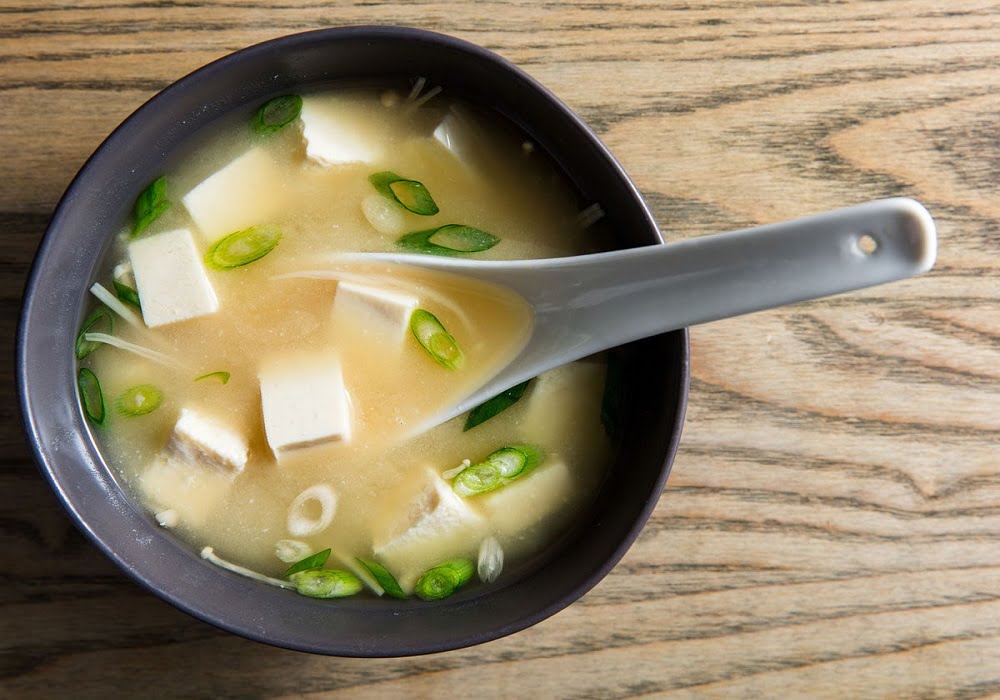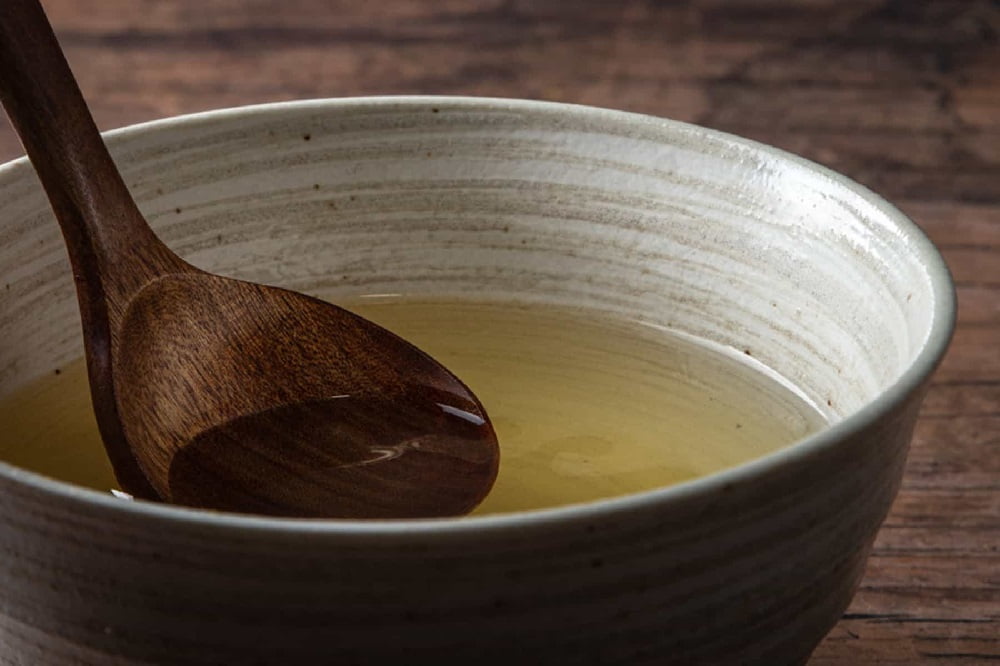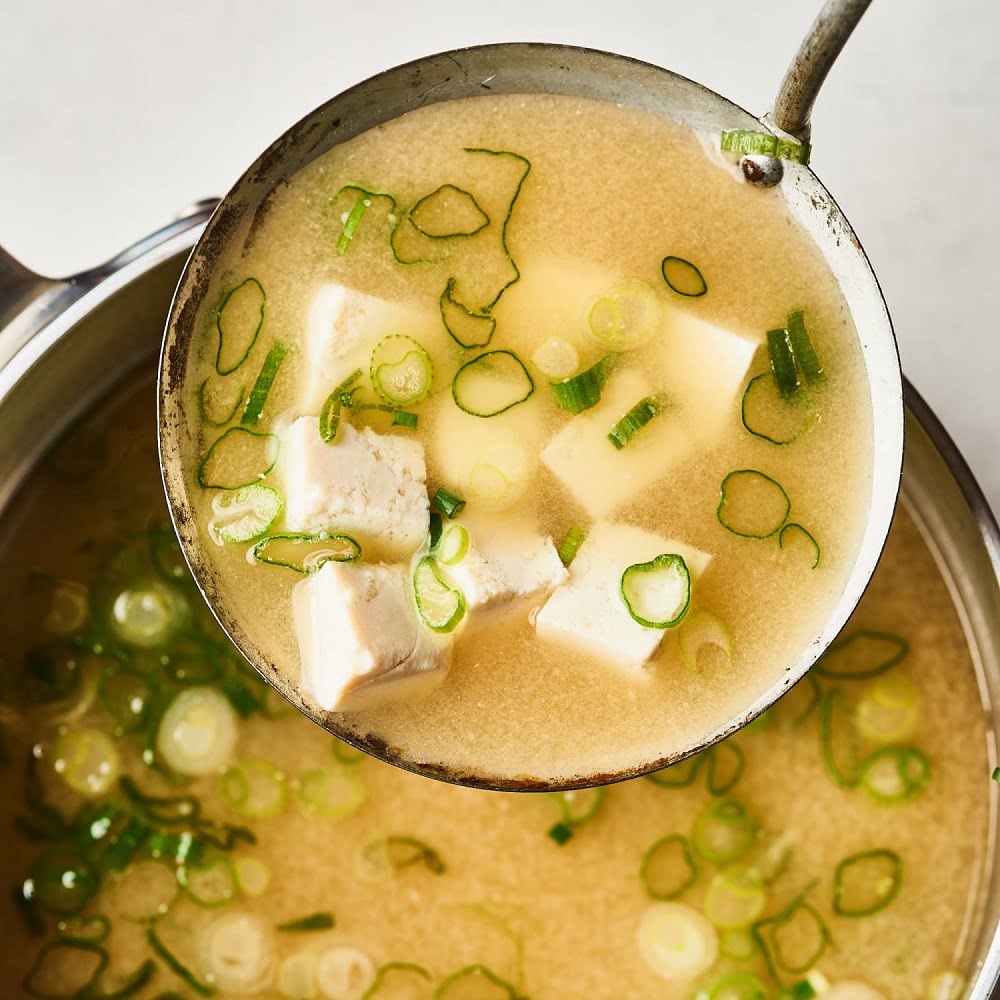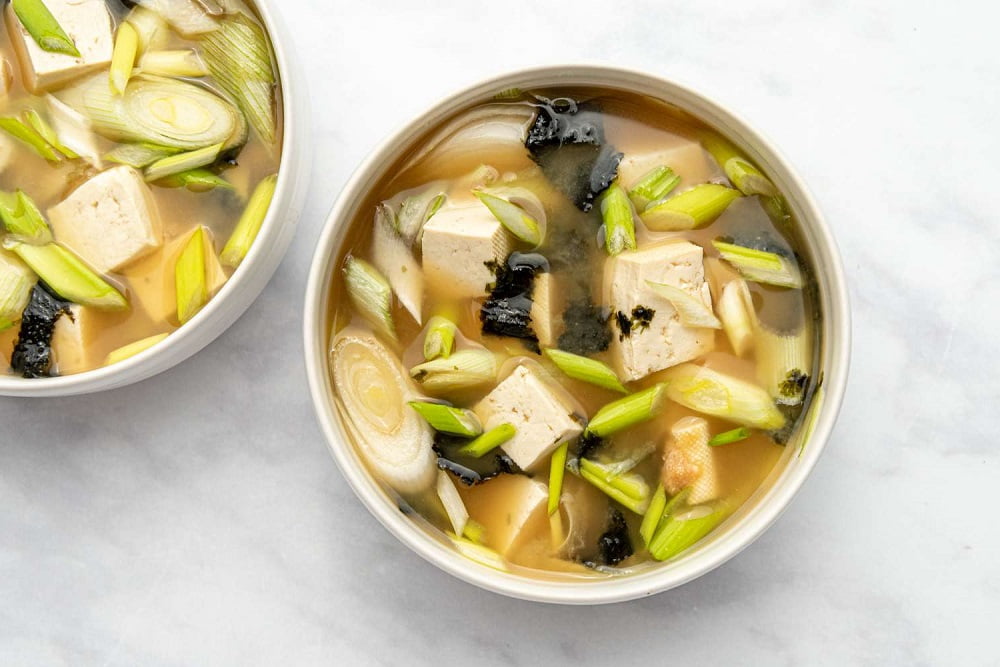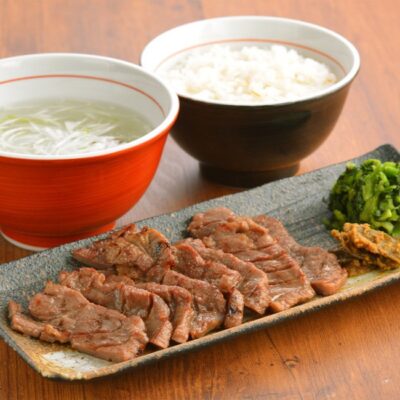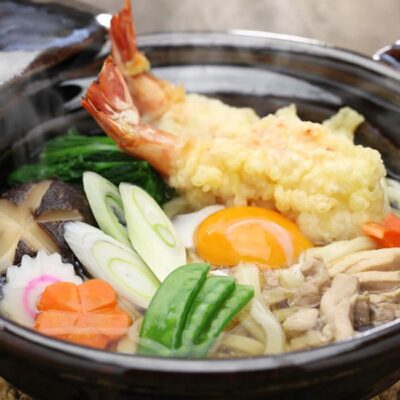Directions
Introduction
Miso soup is a beloved dish in Japanese cuisine, known for its comforting flavors and nourishing qualities. Made with a base of dashi broth, miso paste, and a variety of ingredients, miso soup is versatile and can be customized to suit individual tastes. In this article, we will explore the traditional miso soup recipe, guide you through the process of making homemade dashi broth, and provide tips on selecting the right miso paste for your soup. Get ready to embark on a culinary journey to Japan and savor the authentic flavors of miso soup.
Table of Contents
- The Importance of Dashi Broth in Miso Soup
- Choosing the Right Miso Paste
- Traditional Ingredients in Miso Soup
- Miso Soup Recipe: Step-by-Step Instructions
- Making Dashi Broth from Scratch
- Preparing the Miso Soup Base
- Adding Tofu and Wakame Seaweed
- Garnishing and Serving
- Tips and Variations for the Perfect Miso Soup
- Frequently Asked Questions (FAQs)
- How long does miso soup last?
- Can I freeze miso soup?
- What can I substitute for miso paste?
- Can I make miso soup without dashi?
- Is miso soup vegan-friendly?
- Can I add meat to miso soup?
The Importance of Dashi Broth in Miso Soup
Dashi broth is the foundation of miso soup and plays a crucial role in enhancing its flavor. Dashi is a Japanese soup stock commonly made from kombu (edible kelp) and bonito flakes (dried fish flakes). It is essential for achieving the authentic umami taste that characterizes miso soup. The combination of kombu and bonito flakes creates a delicate balance of savory flavors that complements the richness of miso paste. While dashi can be purchased in instant form, making it from scratch allows for more control over the ingredients and results in a more nuanced and flavorful miso soup.
Choosing the Right Miso Paste
Miso paste is the key ingredient that gives miso soup its distinct taste. It is made from fermented soybeans and grains, with the fermentation process contributing to its unique flavor profile. There are three main types of miso paste: white, yellow, and red.
- White Miso: Also known as shiro miso, white miso is the mildest and sweetest variety. It has a light yellow color and a subtle flavor. White miso is a great choice for those new to miso soup or those who prefer a milder taste.
- Yellow Miso: Yellow miso is a blend of different miso pastes, offering a harmonious balance of flavor. It has a medium intensity and works well in various dishes, including miso soup. It adds depth and complexity to the soup without overpowering other ingredients.
- Red Miso: Red miso, or aka miso, is the strongest and saltiest type of miso paste. It is fermented for a longer period, resulting in a bold and robust flavor. Red miso is best suited for those who enjoy intense and savory flavors.
When selecting miso paste, opt for high-quality products found in grocery stores or Asian markets. Look for miso paste that is free of additives and preservatives for the best taste and authenticity.
Traditional Ingredients in Miso Soup
Miso soup is a versatile dish that can be customized with various ingredients. While the primary ingredients are miso paste and dashi broth, additional components add complexity and texture to the soup. Some traditional ingredients commonly found in miso soup include:
- Tofu: Silken tofu or diced tofu is often added to miso soup. It provides a creamy and delicate texture that complements the umami flavors of the broth. Tofu is a versatile ingredient that absorbs the flavors of the soup while adding a protein-rich element.
- Wakame Seaweed: Wakame is a type of edible seaweed that imparts a subtly briny taste to the soup. It adds a hint of oceanic flavor and brings visual appeal with its vibrant green color. Wakame seaweed is available in dried form and expands when rehydrated, making it an ideal addition to miso soup.
- Green Onions: Sliced green onions or scallions are a popular garnish for miso soup. They provide a mild onion flavor and a touch of freshness to the overall dish. The vibrant green color of green onions adds visual interest and contrast to the soup.
These ingredients form the foundation of miso soup, but variations can be made based on regional and seasonal recipes. Creative additions include mushrooms, clams, spinach, carrots, and even ground sesame seeds. Don’t be afraid to experiment with different ingredients to find your favorite combination.
Miso Soup Recipe: Step-by-Step Instructions
Now that we have covered the essentials of miso soup, let’s dive into the step-by-step recipe. This recipe will guide you through the process of making homemade dashi broth and preparing the classic miso soup with tofu and wakame seaweed.
Steps
1 Done | Making Dashi Broth from ScratchIngredients: |
2 Done | Preparing the Miso Soup BaseIngredients: |
3 Done | Adding Tofu and Wakame SeaweedIngredients: |
4 Done | Garnishing and ServingIngredients: |
5 Done | Tips and Variations for the Perfect Miso Soup• For a vegetarian or vegan version of miso soup, use vegetarian dashi or substitute with mushroom broth. |
6 Done | Frequently Asked Questions (FAQs)1. How long does miso soup last? Miso soup can be refrigerated and consumed within 2-3 days. It is best enjoyed fresh. |
7 Done | ConclusionMiso soup is a delightful and comforting dish that embodies the essence of Japanese cuisine. With its rich umami flavor, miso soup has become a beloved dish enjoyed not only in Japan but also around the world. By following this authentic miso soup recipe, you can recreate the flavors of Japan in your own kitchen. Customize your miso soup by adding your favorite ingredients and enjoy the nourishing and soul-warming qualities it provides. Delight in each spoonful of this traditional Japanese delight, and savor the delicate balance of flavors that define miso soup. So, why wait? Grab the ingredients and embark on a culinary adventure with miso soup today! |

